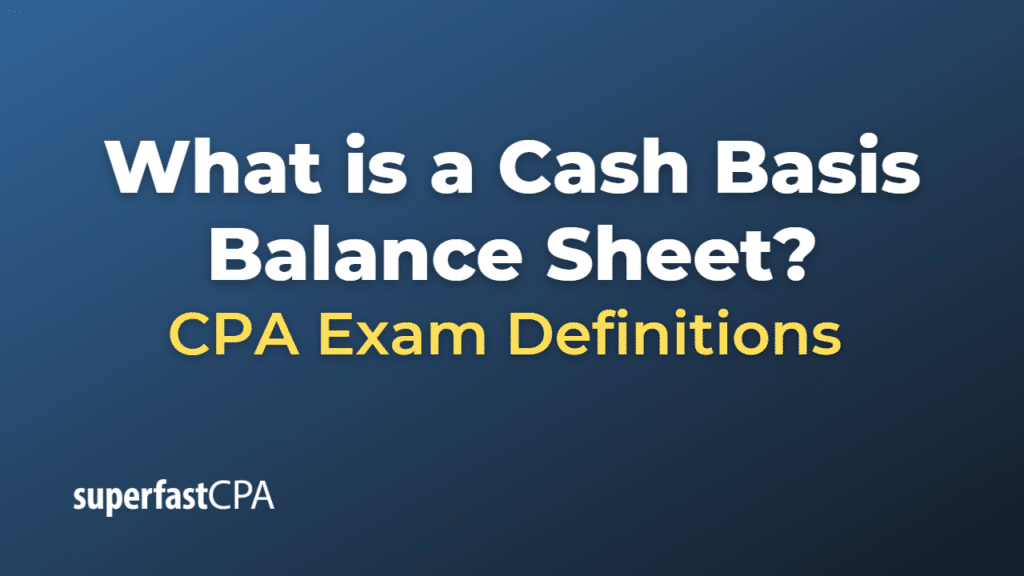Cash Basis Balance Sheet
A cash basis balance sheet is a financial statement that presents a company’s assets, liabilities, and equity at a specific point in time using the cash basis of accounting. In the cash basis of accounting, revenues are recognized when cash is received, and expenses are recognized when cash is paid out.
A cash basis balance sheet differs from an accrual basis balance sheet, which follows the accrual basis of accounting. In the accrual basis of accounting, revenues and expenses are recognized when they are earned or incurred, regardless of when cash is exchanged.
Because the cash basis balance sheet only reflects cash transactions, it may not provide a complete picture of a company’s financial position. For example, accounts receivable (amounts owed by customers) and accounts payable (amounts owed to suppliers) are typically not included on a cash basis balance sheet, as these items represent transactions that have not yet resulted in the exchange of cash.
A cash basis balance sheet is generally simpler to prepare and understand compared to an accrual basis balance sheet, but it may not be suitable for larger businesses or those required to follow Generally Accepted Accounting Principles (GAAP) or International Financial Reporting Standards (IFRS).
While the cash basis balance sheet is not commonly used in practice, it can be useful for small businesses, sole proprietorships, or individuals who prefer a simpler method of tracking their financial position. However, it is important to recognize that this approach may not provide a comprehensive view of a business’s financial health and performance over time.
Example of a Cash Basis Balance Sheet
Let’s consider a small landscaping business, “Green Gardens,” to illustrate a cash basis balance sheet. At the end of the fiscal year, Green Gardens has the following assets, liabilities, and equity:
Assets:
- Cash: $20,000 (physical currency, checking and savings accounts)
- Equipment: $10,000 (lawnmowers, trimmers, and other tools)
Liabilities:
- Loan payable: $5,000 (outstanding loan balance)
Equity:
- Owner’s equity: $25,000 (initial investment made by the owner)
Please note that in this example, there are no accounts receivable or accounts payable, as the cash basis balance sheet does not consider transactions that have not yet resulted in cash exchanges.
The cash basis balance sheet for Green Gardens would look like this:
Assets:
- Cash: $20,000
- Equipment: $10,000 Total Assets: $30,000
Liabilities:
- Loan payable: $5,000 Total Liabilities: $5,000
Equity:
- Owner’s equity: $25,000 Total Equity: $25,000
Total Assets = Total Liabilities + Total Equity $30,000 = $5,000 + $25,000
In this example, the cash basis balance sheet only reflects the cash transactions for Green Gardens. It is relatively simple and easy to understand but may not provide a complete picture of the business’s financial position. For instance, if Green Gardens had outstanding invoices from customers or pending bills from suppliers, these would not be reflected on the cash basis balance sheet, as they have not yet resulted in cash exchanges.














